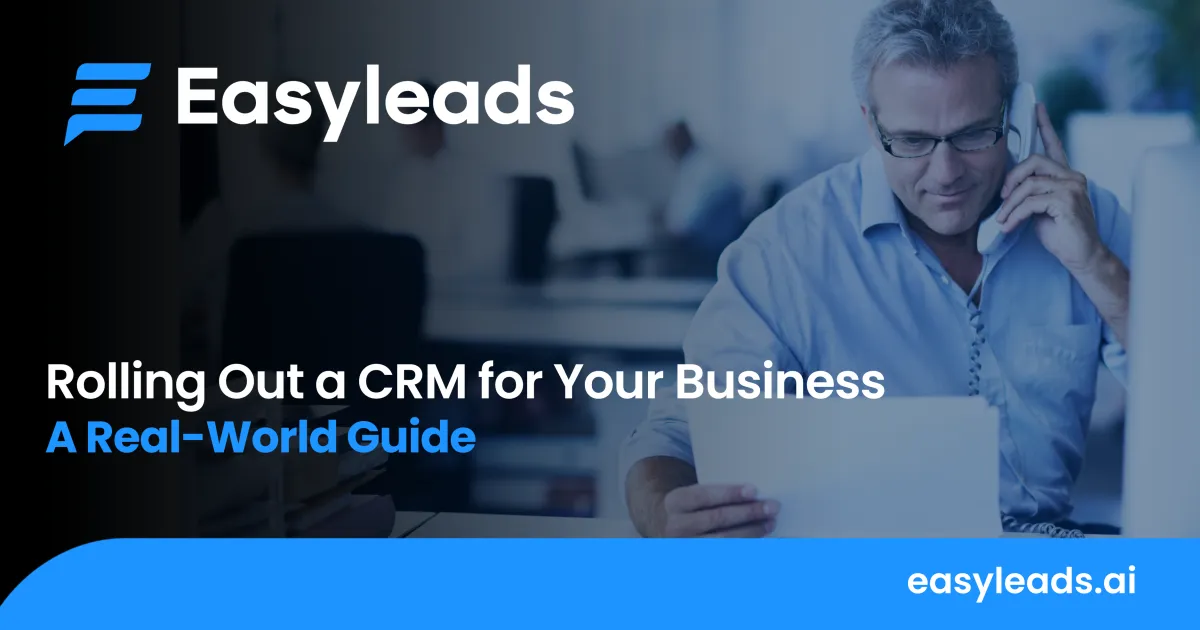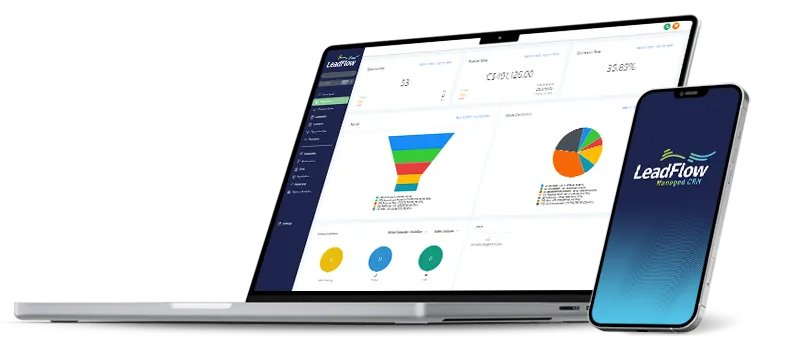Blog

How to Roll Out a CRM for Your Business
So, you’re thinking about getting a CRM.
Maybe you’ve outgrown your spreadsheets, or you’re tired of chasing lost leads in a sea of sticky notes. Only the overwhelming dread of implementing a CRM has forced you to put up with your old lead organization system. If the idea feels overwhelming, you’re not alone. For small and midsize business owners, getting started with a CRM can seem like one of those “easier said than done” projects.
The good news is that, with the right approach, you can avoid the headaches and end up with a system that actually makes your business run smoothly.
Why CRM Projects Go Sideways (And How to Avoid It)
Let’s be honest: most CRM horror stories start with good intentions. Business owners want to be more organized and better serve their customers. But too often, people dive in without a clear plan, or pick a system because it has all the bells and whistles, not because it fits how they really work.
Common CRM Struggles:
Sticker shock
Many small businesses jump in for the “free trial” or a low monthly price, only to hit paywalls when they need basic features.
Complexity overload
Some CRMs feel like they were built for Fortune 500s, not a five-person team. It’s easy to get lost in menus and setup screens.Support gaps
When something goes wrong, getting real help can feel like shouting into the void, especially if you’re not on a premium plan.
A smooth rollout starts with clear goals. Don’t just ask, “What can this CRM do?” Instead, ask, “What do I need it to do for my business right now?” List your must-haves: maybe it’s tracking sales calls, scheduling follow-ups, or managing quotes. If a platform can’t deliver those basics easily, keep looking.
Start Simple
It’s tempting to go for the most feature-packed option, but the most successful CRM launches start small. Begin by mapping your core process. For most service businesses, that’s:
Capturing a new lead or inquiry
Tracking your ongoing conversations
Following up and closing the deal
Real-World Example
One business owner we spoke with signed up for a popular CRM, thinking they’d finally get organized. But as soon as it was time to set up automations and manage contacts, they realized the platform’s tutorials weren’t enough.
Questions piled up. “How do I migrate existing contacts? Which features actually matter? How do I keep my team on the same page?” With little onboarding help available and support tickets going unanswered, the rollout stalled.
What changed everything was having access to real, hands-on support through Easyleads. Once they had someone to guide them through those early steps by answering questions, troubleshooting, and sharing best practices, the CRM finally integrated into their workflow. Instead of giving up or working around problems, they felt confident using the system day-to-day.
Choose a CRM Partner, Not Just a Platform
Here’s something that many guides skip: technology alone won’t solve your customer management headaches. What makes the difference is having support you can actually count on. Many business owners get stuck when they run into an interface problem or when their data import doesn’t go as planned. That’s when you need a real person, not a forum post or a chatbot.
The Easyleads approach is built around personal service. That means onboarding help, straightforward answers, and no hidden upcharges for basic support. While every business’s needs are different, having an expert on your side can save you hours of trial and error.
Onboarding: Laying the Foundation for CRM Success
One of the most overlooked steps in any CRM rollout is onboarding. Even the best tool falls flat if your team doesn’t know how to use it or worse, if everyone uses it differently. Onboarding is more than just a quick tutorial or email with login details; it’s the foundation that sets your team up for consistent, long-term success.
First, keep onboarding simple. Focus on the essential tasks your staff needs to handle every day, such as adding new leads, tracking conversations, and updating customer information. Avoid overwhelming them with every advanced feature right away. In most cases, a single, well-structured session covers the basics and gives everyone a chance to ask questions.
Next, clarify roles and responsibilities:
Who’s in charge of entering leads?
Who follows up with clients?
Documenting these expectations helps prevent confusion and missed opportunities. If your CRM allows, set up user roles so everyone only sees what they need for their job.
Finally, be open to feedback. Sometimes, real-life use reveals small snags or areas where your setup could be improved. Encourage your team to share what’s working and what isn’t, then be ready to adjust. That initial investment in onboarding pays off with better adoption, cleaner data, and a system that genuinely supports your business growth.
Make It a Team Project
CRMs only work if your people use them. Too many projects stall because the owner sets everything up, but no one else knows how (or why) to use the system. Before launching, gather your team’s input. What slows them down right now? What’s their biggest frustration? Build your setup around those answers.
Training doesn’t have to be formal or expensive. A quick screen-share or walkthrough can do the trick. The key is to keep everyone in the loop, so the CRM becomes part of how you do business, not just “another tool.”
Expect Progress, Not Perfection
No CRM is perfect out of the box. You’ll probably need to make a few changes as you go. Set a reminder to review your process after the first month. Are you tracking the right things? Is something slowing you down? Adjust as needed. The best systems grow with you.
Conclusion
Rolling out a CRM doesn’t have to be a slog or a money pit. With clear goals, a simple start, real support, and a team approach, you can get organized and stay that way.
If you’re looking for a partner to help you avoid the usual pitfalls, that’s exactly why Easyleads exists. Want to see what CRM can do when you don’t have to go it alone? Book a quick demo and we’ll take you through Easyleads’ onboarding process with no pressure and no tech headaches.

Copyright Easyleads CRM 2023 - Privacy Policy - All Rights Reserved

